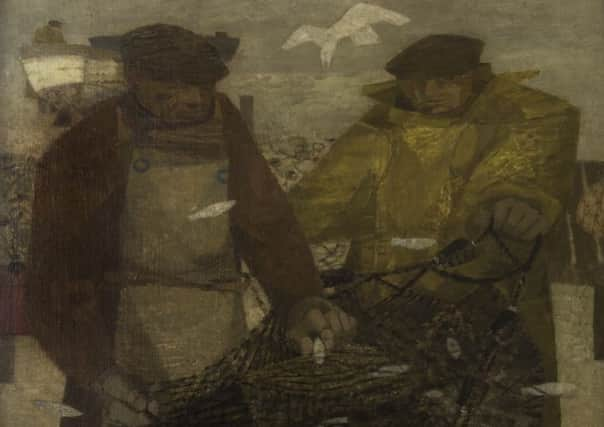Drawn to the exotic - an artist who found beauty in unexpected places


Now a new retrospective of her work is being staged by Hastings Jerwood Gallery, celebrating Clough’s early industrial and later experimental works in a new exhibition called Unknown Countries
The show highlights the two major elements of her artistic practice,explains Jerwood Gallery Director, Liz Gilmore, who said: “ For Undiscovered Countries we’ve sourced works from right across her career, with the earliest piece from 1944, to one that she completed two years before she died in 1999.
Advertisement
Hide AdAdvertisement
Hide Ad“Effectively, the exhibition encapsulates fifty years of her output. Appropriately for the gallery located on Hastings Stade, amongst the fishing boats and net huts of the historic Old Town, key works on display will include Fishermen with Sprats, Trawl Net and Fisherman Carrying Tarpaulin representing her early fishing works. In contrast, Back Drop, Electrical Installation I and Still Life reflect Cloughsmove towards creating large scale, more abstract works in her later career. Still Life is a wonderful example of her edgy, experimental ‘found object’ works.”
Born in 1919 to a wealthy family with aristocratic forbears, Clough enrolled at the Chelsea School of Art in 1937 and from there, became a full-time artist. Wartime service was the only interruption in what would become a much-lauded career. She died 1999.
Shortly before she died, Clough won the prestigious Jerwood Painting Prize.
Although often referred to as abstract - Clough refuted this description – her work became increasingly less figurative and representational as she got older. Her later work had a tendency to be larger and she also developed an interest in creating quirky pieces. This exhibition will offer rare insights into Cloughs work through previously unseen archive material. Although regarded as a major British artist of the 20th century, and recognised by a major retrospective exhibition at Tate Britain in 2007, Clough still has not received the attention and recognition that she deserves.
Advertisement
Hide AdAdvertisement
Hide AdShe was very reluctant to talk about her work, and often refused to promote and exhibit, and this may have contributed to her not getting the wider, public recognition that she deserved.
Liz Gilmore hopes that the show will go some way to establishing Clough in the wider public consciousness: “She was an individual, unique, and endlessly experimental artist. Clough was one of the greatest British painters of the 20th century and has been compared, in terms of significance and inventiveness, to Georges Braque. Clough deserves to be better known and appreciated today. She inspired generations of artists and continues to do so. She was a painter’s painter. Go to www.jerwoodgallery.org or @jerwoodgallery on Twitter.